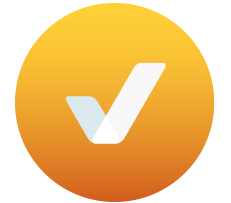Virginia can achieve a carbon-free future, if they allow it.
Across the country we’re seeing states and municipalities announce aggressive carbon reduction goals to help combat a changing climate and meet constituent demand for more clean energy. In September, Governor Ralph Northam signed an executive order that calls for 30% of Virginia’s electric system to be powered by renewable energy resources by 2030, and calls for the Commonwealth to generate 100% of its electricity from carbon-free sources by 2050.
Virginia’s goals are similar to what many other states are calling for: incremental increases in clean energy generation during the next decade, with the end goal of a carbon-free future in the not so distant future. And as noble and ambitious as they are, I believe Virginia can achieve these goals sooner than their target dates by utilizing the existing resources available to us today, and by leveraging pent up consumer demand for access to clean energy.
The two most cost-effective and reliable clean energy generation sources are wind and solar. While wind energy is most notably developed and deployed at a large scale, solar energy can be deployed at the residential and commercial level and provide direct benefits to the consumer and the local community — empowering Virginians to participate in the clean energy transition, all while reducing their energy costs. However, not all residents and businesses own their properties, have suitable roofs to install solar, or have the financial means to invest in solar, leaving them unable to participate in the clean energy revolution.
The solution: shared solar.
The shared solar model is simple: develop medium-sized solar systems within a community and allow residents, businesses, non-profits, and municipalities to subscribe, or lease, a portion of the panels to help offset their electricity usage. Shared solar allows anyone who pays an electricity bill the opportunity to receive the financial benefits of rooftop solar, without having to invest and install solar onsite. This represents an enormous opportunity to quickly scale solar capacity in the Commonwealth towards achievement of its carbon-reduction goals. Most importantly, shared solar provides equitable access to solar energy for anyone who wants to participate.
One problem remains. While Virginia shares very similar clean energy goals with its neighboring states, it does not share a common policy that enables the development of shared solar. As of today, 19 states and the District of Columbia have enacted a shared solar policy. Virginia is not one of them. States like Maryland, New Jersey, and New York all currently have shared solar programs that are bolstering their solar energy commitments and providing their residents and businesses access to clean energy.
Currently, Virginia has the opportunity to join its neighbors in receiving the benefits that shared solar provides. HB 1634 and SB 629 passed the first step, without opposition, and are now making progress through the state capital. Both bills will enable shared solar in Virginia, ensuring Virginians are not left behind in the race to a carbon-free future.
As this legislative session comes to an end, it’s my hope that we can find a way to utilize the existing opportunities and resources available to us to usher in more solar for Virginia families. If Virginia is serious about achieving a carbon-free future as outlined in the governor’s executive order, it will be difficult to do so without empowering residents and businesses to help.

